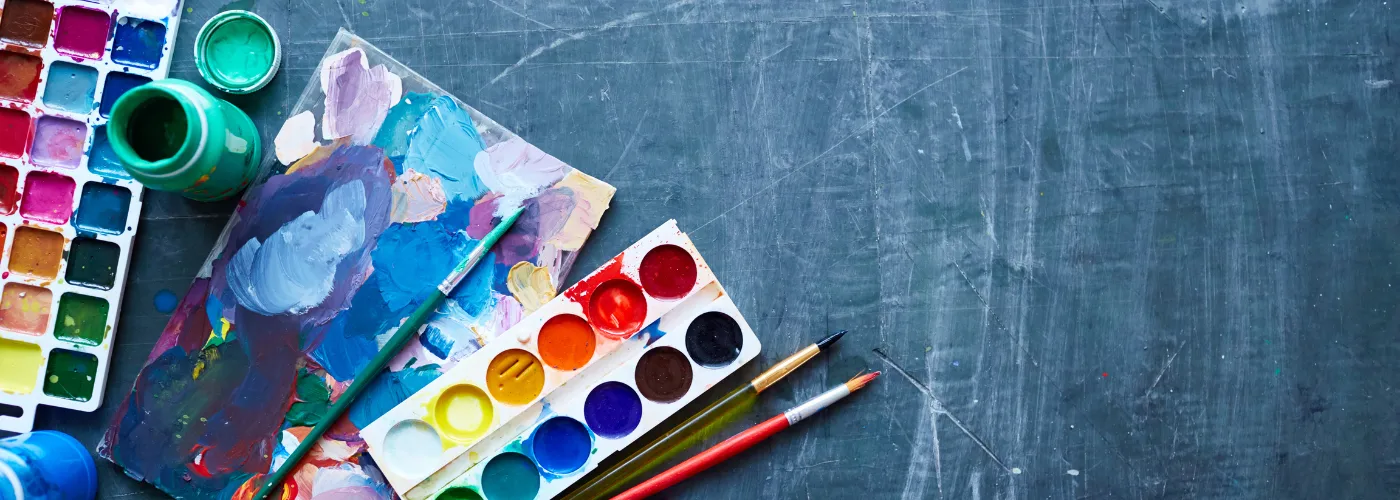1. Simplicity
Sounds obvious, doesn’t it? When it comes to the minimalism philosophy, simplicity is paramount. Thus, minimalism necessitates that the graphic design is kept simple and that designers avoid incorporating too many graphic elements into the design project.
For example, limiting the font choice to a maximum of two fonts, using a relaxed and short color palette, and only putting necessary information into the design itself. This also makes it easier to choose the right colors for your brand.
2. Focus on Functionality
Minimalism prioritizes functionality. By assimilating minimalism into graphic design, designers are directed to focus on accessibility over the aesthetic, over the top appeal.
With minimalist graphic design, each element is placed purposefully with a goal in mind. Here’s a simple check: If an element of your graphic design doesn’t aid your agenda, it doesn’t belong in there!
3. Visual Hierarchy
When it comes to minimalist graphic design, you want your audience to immediately grasp the information being transmitted.
Therefore, a crucial aspect of minimal design patterns is to follow the visual hierarchical principles: organize the information and lead the viewer’s eye in the direction you want, such that the first thing they see is the focal point-i.e. the main information being relayed.
4. Be Punctilious With Proportions
Proportions, proportions, proportions. Something a graphic designer normally wouldn’t even bat an eye toward becomes a glaring issue when it comes to minimalistic graphic design. The reason? There are barely any design elements to cover up your mistakes!
That’s why we recommend using grids in your design project, allowing you to easily organize all the elements on a graphic layout and make it easier for the viewer to identify the central information.
5. Selecting Simple Typefaces
The importance of font faces and typography can not be emphasized enough. Important as they are in graphic design when it comes to minimalist graphic design, typography plays a pivotal role in relaying the message to your readers. As always, it’s important to remember that functionality should outweigh visual aesthetics, which is why you should opt for a readable font, and steer clear of oversaturated ones. With minimalistic designs, big and bold fonts have become the norm, as they’re readable, and relay information well.
6. Negative Space
Negative space sounds a bit self-contradictory, doesn’t it? Let us help explain. Negative space is the blank area surrounding an image or text, which is then integrated into a certain design. It may sound odd, but we can play around with negative space ( yes, empty spaces), to make our graphic designs more appealing.
Negative space is a pivotal element of every minimalist graphic design project, and adding more blank space to our design makes it easier to highlight the cynosure of our design elements, making the message stand out even more.
7. Restrict Your Color Palette
It’s a general misconception that with minimalistic graphic design, your color palette is limited to monotone. However, that’s not exactly the case.
The key point to note here is that a color selected should be meaningful- either by staying consistent with your brand’s color scheme or by referring to color theory.
In fact, you can even opt for two, or in some rare cases, three colors! At the end of the day, however, it’s all about seeing what works best for your needs and requirements. Trial and error it is!
Less is More
“Less is more” is quite a self-explanatory statement, is it not?
When it comes to minimalism, a rule of thumb is to focus solely on important elements: avoid using any over-the-top decoration and excessive design elements.
Simply keep on removing elements that do not add value to your design project. Eventually, you’ll reach a point where you’ll be left with only the important elements of your design, which you can then play around with to make a standout minimalist graphic design!





